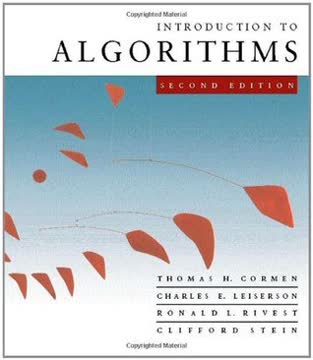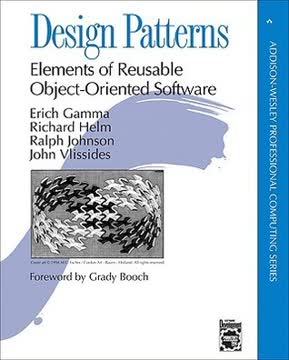نکات کلیدی
1. اینترنت: شبکهای از شبکهها که خدمات ارائه میدهد
اینترنت یک شبکه کامپیوتری است که میلیاردها دستگاه محاسباتی را در سرتاسر جهان به هم متصل میکند.
اتصال جهانی. اینترنت یک سیستم وسیع و به هم پیوسته است که میلیاردها دستگاه را از کامپیوترهای سنتی تا گوشیهای هوشمند، دستگاههای اینترنت اشیا و سرورها به هم متصل میکند. این تنها به سختافزار محدود نمیشود؛ بلکه زیرساختی است که خدماتی را به برنامههای توزیعشده ارائه میدهد.
معماری مبتنی بر خدمات. اینترنت یک رابط سوکت ارائه میدهد، مجموعهای از قوانین که برنامهها باید برای درخواست تحویل داده به سایر برنامهها از آن پیروی کنند. این رابط به توسعهدهندگان اجازه میدهد تا برنامههای توزیعشدهای ایجاد کنند بدون اینکه نیاز به درک پیچیدگیهای زیرساخت شبکه داشته باشند.
پروتکلها و استانداردها. اینترنت به پروتکلهایی مانند TCP/IP متکی است که انتقال داده را مدیریت میکنند. استانداردهایی که توسط سازمانهایی مانند IETF توسعه یافتهاند، اطمینان از تعاملپذیری را فراهم میکنند و به سیستمهای متنوع اجازه میدهند به طور مؤثر با یکدیگر ارتباط برقرار کنند.
2. لبه شبکه: سیستمهای انتهایی، شبکههای دسترسی و رسانههای فیزیکی
در اصطلاحات اینترنت، تمام این دستگاهها به عنوان میزبان یا سیستمهای انتهایی شناخته میشوند.
سیستمهای انتهایی و میزبانها. دستگاههای متصل به اینترنت که به عنوان سیستمهای انتهایی یا میزبانها شناخته میشوند، شامل کامپیوترها، گوشیهای هوشمند و دستگاههای اینترنت اشیا هستند. این میزبانها برنامههایی را اجرا میکنند و به عنوان مشتری (درخواستدهنده خدمات) یا سرور (ارائهدهنده خدمات) دستهبندی میشوند.
شبکههای دسترسی. سیستمهای انتهایی از طریق شبکههای دسترسی به اینترنت متصل میشوند، مانند DSL، کابل، FTTH، اترنت، WiFi و شبکههای سلولی. این شبکهها از رسانههای فیزیکی مختلفی استفاده میکنند، از جمله سیم مسی، کابل کواکسیال، فیبر نوری و طیف رادیویی.
رسانههای فیزیکی. رسانههای فیزیکی، چه هدایتشده (مانند کابلهای فیبر نوری) و چه غیرهدایتشده (مانند امواج رادیویی)، دادهها را بین دستگاهها منتقل میکنند. انتخاب رسانه بر نرخهای انتقال، هزینهها و مناسب بودن برای محیطهای مختلف تأثیر میگذارد.
3. هسته شبکه: سوئیچینگ بسته، سوئیچینگ مدار و اتصالات
یک سوئیچ بسته، بستهای را که از یکی از لینکهای ارتباطی ورودی خود میرسد، دریافت کرده و آن بسته را به یکی از لینکهای ارتباطی خروجی خود ارسال میکند.
سوئیچینگ بسته. دادهها به بستههایی تقسیم میشوند که از طریق شبکه توسط سوئیچهای بسته (روترها و سوئیچهای لایه لینک) منتقل میشوند. این رویکرد اجازه میدهد تا از منابع شبکه به طور مؤثر استفاده شود و مسیریابی انعطافپذیری را فراهم کند.
سوئیچینگ مدار. در مقابل، سوئیچینگ مدار یک اتصال اختصاصی بین سیستمهای انتهایی برای مدت زمان یک جلسه ارتباطی برقرار میکند. در حالی که پهنای باند تضمین شدهای را فراهم میکند، ممکن است برای ترافیک ناگهانی کمتر کارآمد باشد.
شبکهای از شبکهها. اینترنت یک شبکه از ISPهای به هم متصل است که از ارائهدهندگان محلی دسترسی تا ارائهدهندگان بینالمللی و ملی سطح یک را شامل میشود. این ISPها در نقاط تبادل اینترنت (IXP) با یکدیگر همتا میشوند تا ترافیک را مبادله کنند.
4. تأخیر، از دست رفتن و توان عملیاتی: درک عملکرد شبکه
یک بسته در یک میزبان (منبع) شروع میشود، از طریق یک سری روترها عبور میکند و سفر خود را در یک میزبان دیگر (مقصد) به پایان میرساند.
منابع تأخیر. بستهها در حین عبور از شبکه با تأخیرهای مختلفی مواجه میشوند، از جمله تأخیر پردازش، تأخیر صف، تأخیر انتقال و تأخیر انتشار. درک این تأخیرها برای بهینهسازی عملکرد شبکه بسیار مهم است.
صف و از دست رفتن. تأخیر صف زمانی رخ میدهد که بستهها در بافرهای خروجی در روترها منتظر بمانند. اگر بافرها پر شوند، از دست رفتن بسته اتفاق میافتد که بر عملکرد برنامه تأثیر میگذارد. شدت ترافیک (La/R) یک عامل کلیدی در تعیین تأخیر صف و از دست رفتن بسته است.
توان عملیاتی انتها به انتها. توان عملیاتی، نرخ انتقال داده بین سیستمهای انتهایی، به وسیله لینک گلوگاه در مسیر محدود میشود. عواملی مانند ظرفیت لینک و ترافیک مداخلهگر بر توان عملیاتی انتها به انتها تأثیر میگذارند.
5. لایههای پروتکل: ساختاردهی ارتباطات شبکه
یک پروتکل فرمت و ترتیب پیامهای مبادله شده بین دو یا چند موجودیت ارتباطی را تعریف میکند و همچنین اقداماتی که در هنگام ارسال و/یا دریافت یک پیام یا رویداد دیگر انجام میشود را مشخص میکند.
معماری لایهای. پروتکلهای شبکه به صورت لایهای سازماندهی شدهاند که هر کدام خدمات خاصی را به لایه بالاتر ارائه میدهند. پشته پروتکل اینترنت شامل پنج لایه است: فیزیکی، لینک، شبکه، حمل و نقل و کاربرد.
پشته پروتکل اینترنت. هر لایه مسئولیتهای خاصی دارد:
- کاربرد: برنامههای شبکه و پروتکلهای آنها (مانند HTTP، SMTP)
- حمل و نقل: پیامهای لایه کاربرد را منتقل میکند (TCP، UDP)
- شبکه: بستههای لایه شبکه (دیتاگرامها) را از یک میزبان به میزبان دیگر منتقل میکند (IP)
- لینک: فریمها را از یک عنصر شبکه به عنصر شبکه مجاور منتقل میکند (اترنت، WiFi)
- فیزیکی: بیتهای فردی را درون فریم از یک گره به گره دیگر منتقل میکند
کپسولهسازی. هنگامی که دادهها به سمت پایین پشته پروتکل حرکت میکنند، هر لایه اطلاعات هدر را اضافه میکند و دادهها را از لایه بالاتر کپسوله میکند. این فرآیند اطمینان میدهد که هر لایه اطلاعات لازم برای انجام وظایف خود را دارد.
6. تهدیدات امنیتی: دفاع در برابر حملات شبکه
تمام فعالیتها در اینترنت که شامل دو یا چند موجودیت ارتباطی از راه دور است، تحت حاکمیت یک پروتکل قرار دارد.
بدافزار. نرمافزارهای مخرب، از جمله ویروسها و کرمها، میتوانند از طریق اینترنت به دستگاهها آسیب برسانند، دادهها را سرقت کنند یا دستگاهها را در باتنتها ثبتنام کنند.
حملات انکار خدمات (DoS). حملات DoS به دنبال غیرقابل استفاده کردن شبکهها یا میزبانها برای کاربران قانونی هستند. این حملات شامل حملات آسیبپذیری، سیلاب پهنای باند و سیلاب اتصال میشوند. حملات DDoS توزیعشده، که از باتنتها استفاده میکنند، به ویژه چالشبرانگیز هستند.
گرفتن بسته. مهاجمان میتوانند از ابزارهای گرفتن بسته برای ضبط اطلاعات حساس منتقل شده در شبکهها، به ویژه شبکههای بیسیم، استفاده کنند. رمزنگاری یک دفاع کلیدی در برابر گرفتن بسته است.
7. تاریخچهای مختصر: از ARPANET تا اینترنت امروز
اینترنت امروز بهطور قابلتوجهی بزرگترین سیستم مهندسی شدهای است که تاکنون توسط بشر ایجاد شده است.
ریشههای سوئیچینگ بسته. ریشههای اینترنت به اوایل دهه 1960 و توسعه سوئیچینگ بسته به عنوان یک جایگزین برای سوئیچینگ مدار برمیگردد. شخصیتهای کلیدی شامل لئونارد کلینراک، پل باران و دونالد دیویس هستند.
ARPANET و TCP/IP. ARPANET، اولین شبکه سوئیچینگ بسته، پیشدرآمدی برای اینترنت بود. توسعه TCP/IP در دهه 1970 پایهای برای اتصال شبکهها فراهم کرد.
انفجار اینترنت. دهههای 1980 و 1990 شاهد گسترش شبکهها و تجاریسازی اینترنت بودند. ظهور وب جهانی در دهه 1990 اینترنت را به عموم مردم معرفی کرد.
آخرین بهروزرسانی::
FAQ
What is "Computer Networking: A Top-Down Approach" by James F. Kurose about?
- Comprehensive networking introduction: The book offers a modern, in-depth overview of computer networking, focusing on the Internet’s architecture, protocols, and applications.
- Top-down pedagogical method: It uniquely starts at the application layer, making networking concepts accessible by relating them to real-world applications before moving down to lower layers.
- Blend of theory and practice: Both conceptual explanations and practical programming examples are provided, including socket programming in Python.
- Coverage of current and future trends: The text addresses recent advances like software-defined networking (SDN), network security, and emerging Internet technologies.
Why should I read "Computer Networking: A Top-Down Approach" by Kurose and Ross?
- Accessible and updated content: The book is regularly revised to reflect the latest networking developments, including new protocols and technologies.
- Balanced theory and hands-on learning: It combines foundational principles with practical assignments, Wireshark labs, and real-world case studies such as Netflix and YouTube.
- Strong pedagogical support: Interactive materials, video presentations, and a companion website enhance learning for both students and practitioners.
- Encourages innovation and critical thinking: The authors inspire readers to imagine and contribute to the evolving Internet landscape.
What are the key takeaways from "Computer Networking: A Top-Down Approach" by Kurose and Ross?
- Layered network understanding: Readers gain a clear grasp of the five-layer Internet protocol stack and how each layer supports the others.
- Application-driven learning: Early focus on network applications helps students see the relevance and practical use of networking concepts.
- Emphasis on Internet principles: The book highlights enduring networking principles that remain relevant beyond specific protocols.
- Preparation for real-world challenges: Coverage of security, scalability, and modern Internet applications prepares readers for current and future networking environments.
What is the top-down approach to teaching networking in "Computer Networking: A Top-Down Approach"?
- Starts with applications: The book begins with familiar network applications like the Web, email, and video streaming to motivate and engage students.
- Layered progression: After applications, it systematically explores the transport, network, link, and physical layers, showing how each supports the one above.
- Motivational and practical: Early exposure to application-layer protocols and socket programming demonstrates the real-world impact of networking.
- Reinforces layered architecture: This approach helps learners understand the dependencies and services provided by each layer.
What are the key concepts and layers of the Internet protocol stack explained in "Computer Networking: A Top-Down Approach"?
- Five-layer model: The book covers the application, transport, network, link, and physical layers, detailing their roles and interactions.
- Application layer focus: Protocols like HTTP, SMTP, DNS, and video streaming are explained in depth.
- Transport layer details: TCP and UDP are covered, including reliable data transfer, flow control, and congestion control.
- Network, link, and physical layers: Topics include IP addressing, routing, Ethernet, WiFi, error detection, and physical transmission media.
How does "Computer Networking: A Top-Down Approach" by Kurose and Ross explain network application architectures?
- Client-server architecture: Describes always-on servers with fixed IPs serving multiple clients, as seen in the Web, FTP, and email.
- Peer-to-peer (P2P) architecture: Explains how peers communicate directly, sharing resources and workload, exemplified by BitTorrent and Skype.
- Hybrid models: Some applications combine client-server and P2P elements, such as instant messaging with server-based user tracking and direct messaging.
- Scalability and challenges: P2P architectures offer self-scalability but face security, performance, and reliability issues due to decentralization.
How does "Computer Networking: A Top-Down Approach" by Kurose and Ross describe the HTTP protocol and its role in the Web?
- Core Web protocol: HTTP defines how browsers and servers exchange messages to retrieve web pages and objects.
- Stateless and connection models: The book explains HTTP’s stateless nature, non-persistent vs. persistent connections, and HTTP/2 enhancements.
- Message structure: Details HTTP request and response formats, including methods (GET, POST), headers, status codes, and entity bodies.
- Advanced features: Covers cookies for state management, web caching for efficiency, and conditional GET requests for cache validation.
What transport-layer services and protocols (TCP/UDP) are covered in "Computer Networking: A Top-Down Approach"?
- Service dimensions: The book discusses reliable data transfer, throughput, timing, and security as key transport-layer services.
- TCP: Provides connection-oriented, reliable delivery with congestion control, used by applications like HTTP and email.
- UDP: Offers connectionless, unreliable delivery with minimal overhead, suitable for timing-sensitive applications like streaming and telephony.
- Security enhancements: Explains how TCP can be paired with SSL for encryption, integrity, and authentication.
How does "Computer Networking: A Top-Down Approach" by Kurose and Ross explain the Domain Name System (DNS) and its importance?
- Distributed directory service: DNS translates human-friendly hostnames into IP addresses using a hierarchical, distributed system of servers.
- Query process: Explains recursive and iterative queries, and how local DNS servers interact with root and TLD servers.
- Caching and efficiency: DNS caching at multiple levels reduces latency and network traffic.
- Resource records: Details DNS record types (A, NS, CNAME, MX) and their roles in Internet functionality.
What insights does "Computer Networking: A Top-Down Approach" by Kurose and Ross provide about Peer-to-Peer (P2P) file distribution and BitTorrent?
- P2P scalability: P2P file distribution leverages peers’ upload capacities, making distribution time efficient even as the number of peers grows.
- BitTorrent protocol: Peers exchange file chunks, use trackers to find each other, and employ rarest-first chunk selection for efficiency.
- Incentive mechanisms: BitTorrent’s tit-for-tat strategy encourages cooperation and discourages free-riding.
- Real-world impact: BitTorrent remains a robust and popular protocol for large-scale file sharing.
How does "Computer Networking: A Top-Down Approach" by Kurose and Ross explain video streaming and Content Distribution Networks (CDNs)?
- Video streaming fundamentals: Discusses high-bitrate, compressed video and adaptive encoding for varying bandwidth.
- HTTP streaming and DASH: Explains how clients use DASH to select video quality based on available bandwidth.
- CDN architectures: Describes "enter deep" (servers inside ISPs) and "bring home" (large clusters at IXPs) deployment strategies.
- Case studies: Analyzes Netflix, YouTube, and Kankan to illustrate different CDN and P2P hybrid approaches.
What are the best quotes and professional insights from "Computer Networking: A Top-Down Approach" by Kurose and Ross, including the Marc Andreessen interview?
- On inspiration: Marc Andreessen credits pioneers like Vannevar Bush, Ted Nelson, and Steve Jobs for shaping his vision of computing.
- On innovation and the Internet: He describes the Internet as a creative frontier but warns of unintended consequences like surveillance.
- Advice for students: Andreessen urges students to deeply understand technology creation and complement it with business acumen.
- On technology’s impact: He states, “Most economic growth throughout history has come from technology—so that’s as good as it gets,” emphasizing technology’s role in advancing living standards.
نقد و بررسی
کتاب شبکههای کامپیوتری به خاطر توضیحات واضح، مثالهای واقعی و پوشش جامع مفاهیم شبکهسازی، نظرات مثبت زیادی دریافت کرده است. خوانندگان از رویکرد از بالا به پایین و سبک نوشتار قابل دسترس آن قدردانی میکنند که موضوعات پیچیده را قابل فهم میسازد. بسیاری این کتاب را منبعی عالی برای دانشجویان و حرفهایها میدانند. برخی انتقادات شامل طولانی بودن، گاهی یکنواخت بودن و پوشش سطحی برخی موضوعات است. منابع و تمرینات آنلاین همراه با کتاب نیز بسیار ارزشمند تلقی میشوند. بهطور کلی، این کتاب به عنوان یک مقدمه جامع و مؤثر به شبکههای کامپیوتری شناخته میشود، با وجود برخی کاستیهای جزئی.
Similar Books













